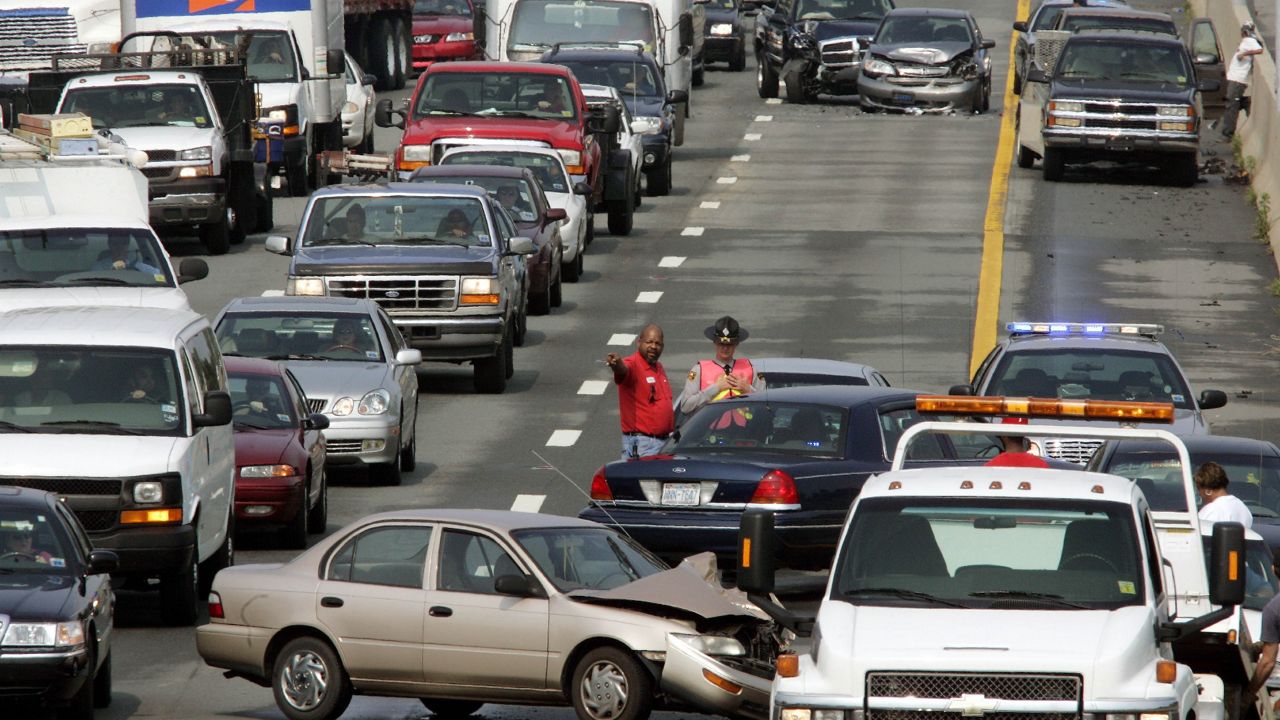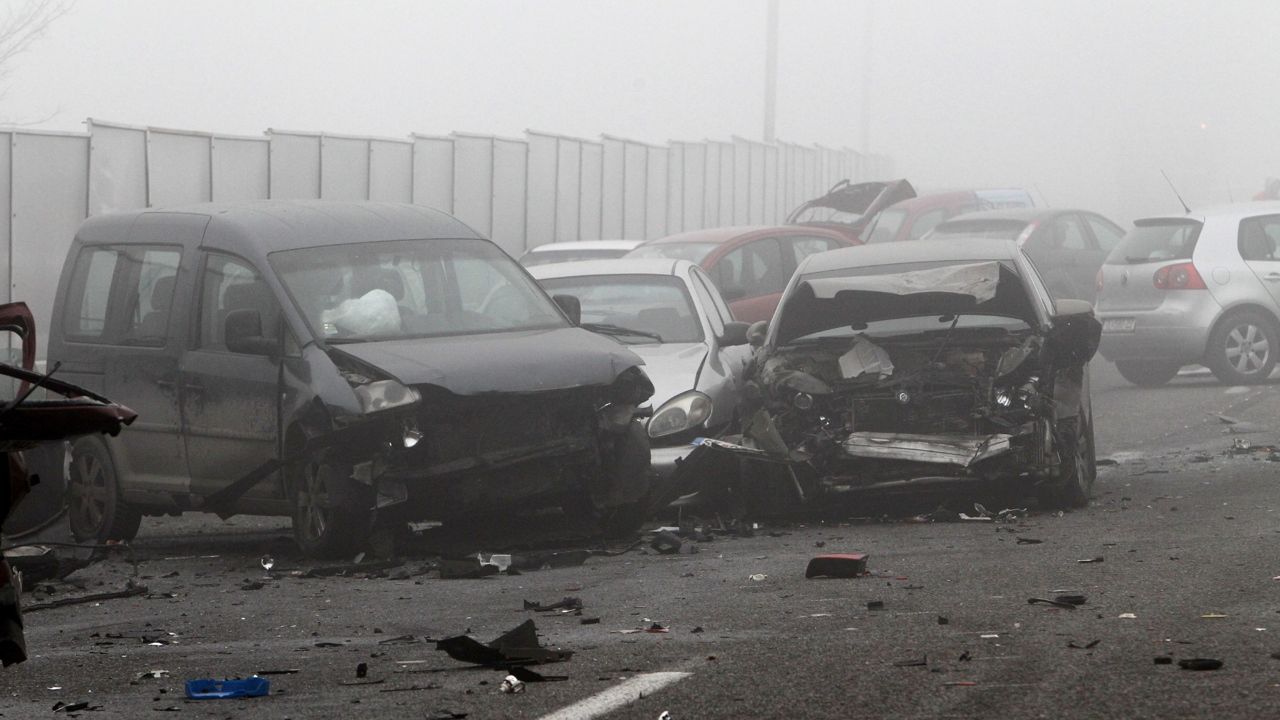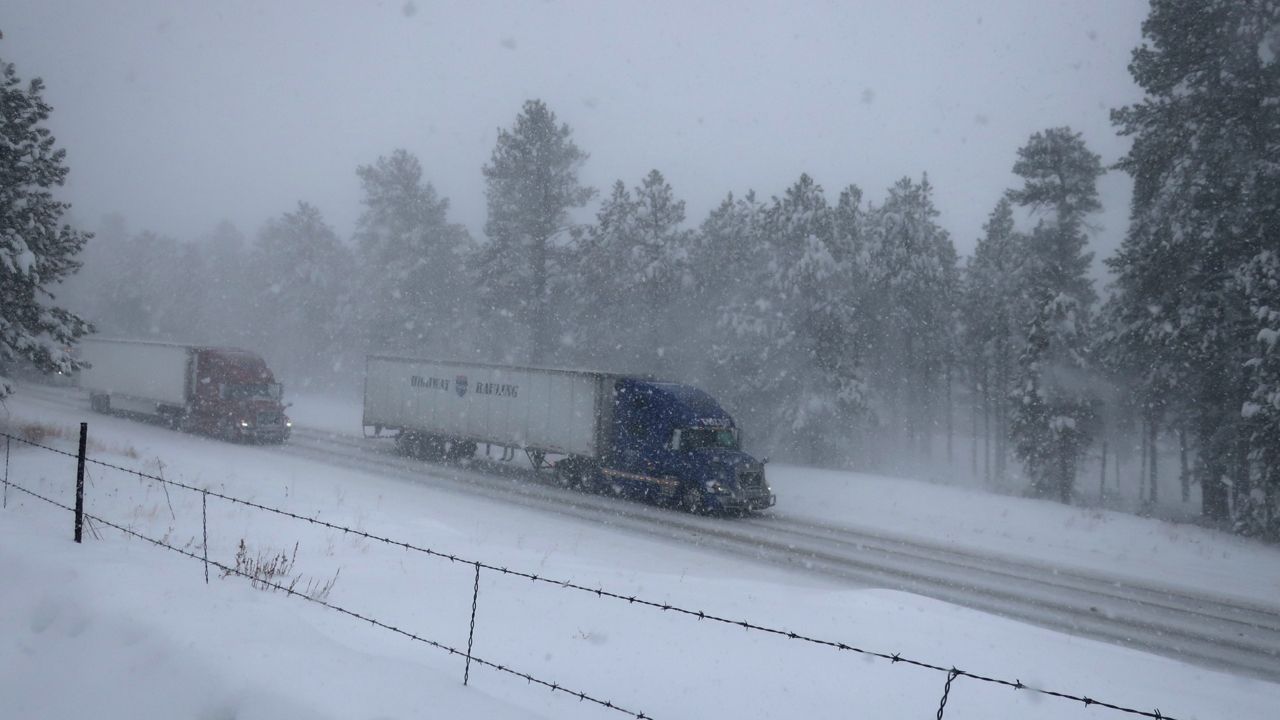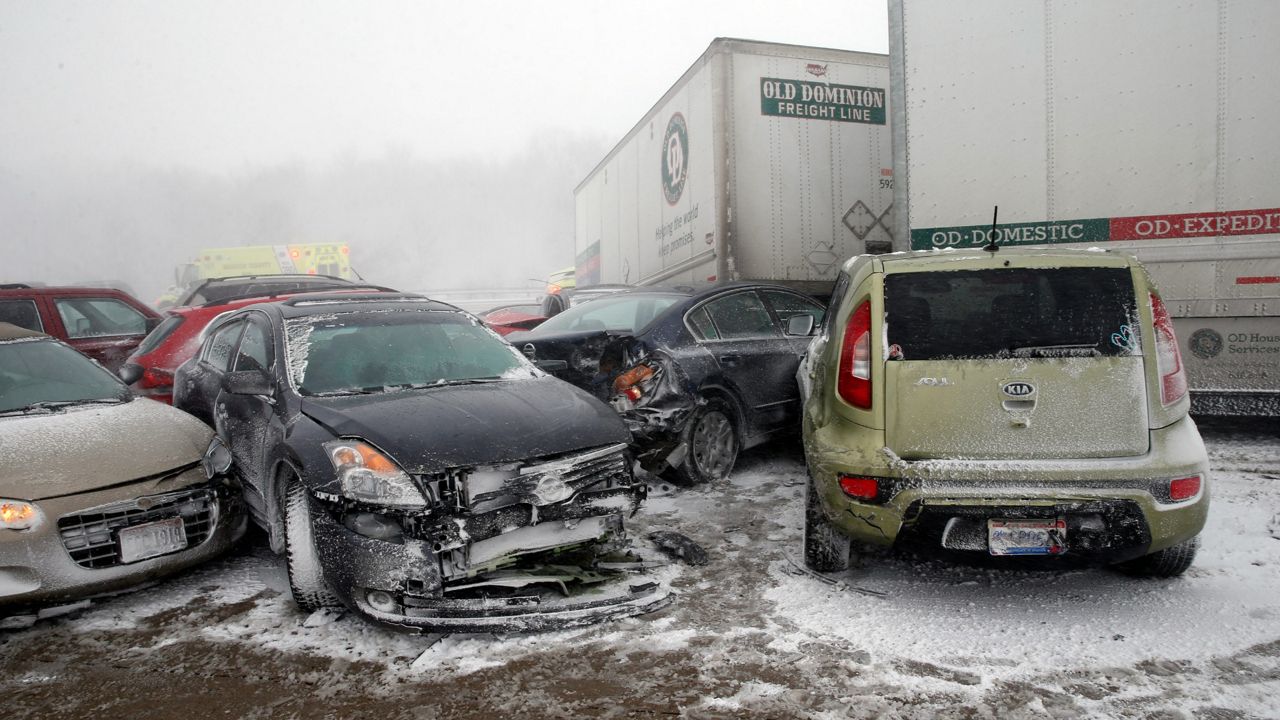If you had to make a list of the deadliest weather conditions, would you put “wet roads” at the top?
Weather-related crashes kill more than 5,000 people each year, and rain causes most of those.
Tornadoes kill about 60 people each year, on average. Meanwhile, something as mundane as fog or freezing fog leads to over 450 fatalities, and it’s the least lethal weather factor in vehicle crashes.
The National Highway Traffic Safety Administration divides crash statistics into fog, snow/sleet, rain, icy pavement, snowy/slushy pavement and wet pavement.
Sometimes–but not always–a couple of those categories may happen at the same time. For example, if it’s raining, the pavement is also wet.
In a study published by the American Meteorological Society, researchers found that a third of fatal crashes happen on slick pavement when poor weather is no longer happening.
One factor that increases crashes: increasing amounts of precipitation. Basically, the more that falls, the more crashes there are. That’s especially true where there’s more traffic to begin with.
Wrecks also become more likely as more time passes between days with precipitation.
Researchers believe that's due in part because oil accumulates on roads when it’s dry, so the first rain after a dry spell makes roads especially slick. Also, people may drive less carefully on the first wet day, since they haven’t dealt with those conditions in a while.

For fatal crashes from snow and ice, seven out of every 10 happen during meteorological winter, which runs from the start of December to the end of February. Snow causes 84% of them, while the rest come from sleet or freezing rain.
Snow squalls are notorious for causing pileups, especially since they happen suddenly.
Crash risk involving pedestrians also goes up on a rainy day, although those situations aren't as clear as the trends for overall crash risk.
It’s not just rain, snow and ice that cause problems. Lower visibility, especially from fog, is responsible for dozens of fatal crashes each year.
Most of those happen on highways in the morning, commonly between 5 and 8 a.m. Fog usually happens during the late-night to morning hours, and this overlaps with the morning commute.

Nearly three-quarters of these crashes during a five-year period happened when no National Weather Service visibility alerts, such as a Dense Fog Advisory, were in place.
You can’t change the weather or other drivers, but you can change your own behavior.
Drop your speed, put more space between you and other cars and avoid sudden changes in speed or direction. A study of crashes on the western part of the New York Thruway shows unsafe speed was the biggest factor in wrecks during inclement weather.
If you’re able to change when you’re on the road, do so. In the case of two particular winter storms in Salt Lake City, the number of crashes was two to five times as high as on a dry day, even with far fewer vehicles driving when snow or freezing rain fell.
If you do drive, you might encounter fewer cars but about as many big trucks. The New York State Thruway research showed commercial vehicle traffic, such as semis, didn’t drop nearly as much as passenger vehicles did during poor weather.

Our team of meteorologists dives deep into the science of weather and breaks down timely weather data and information. To view more weather and climate stories, check out our weather blogs section.



